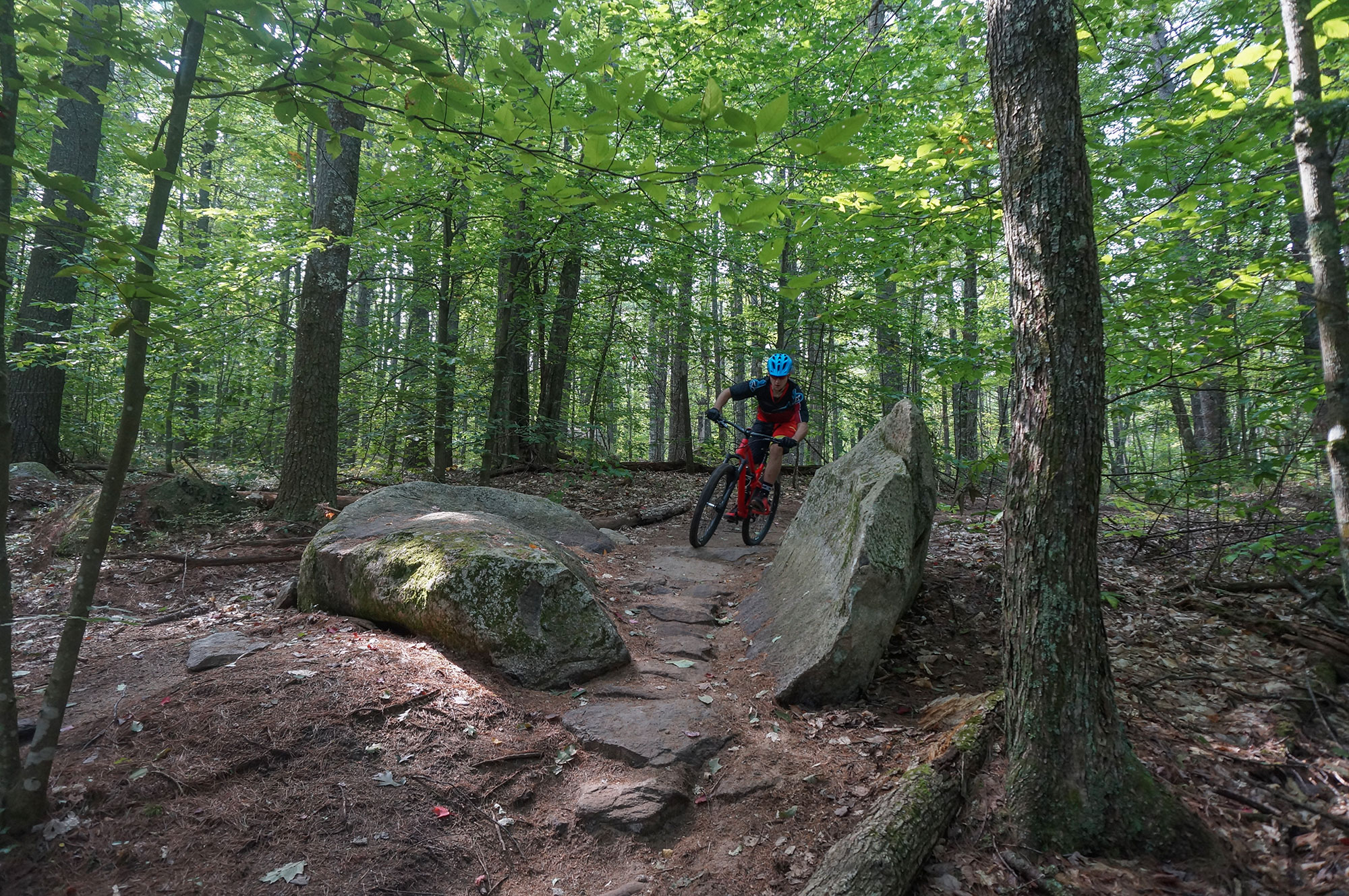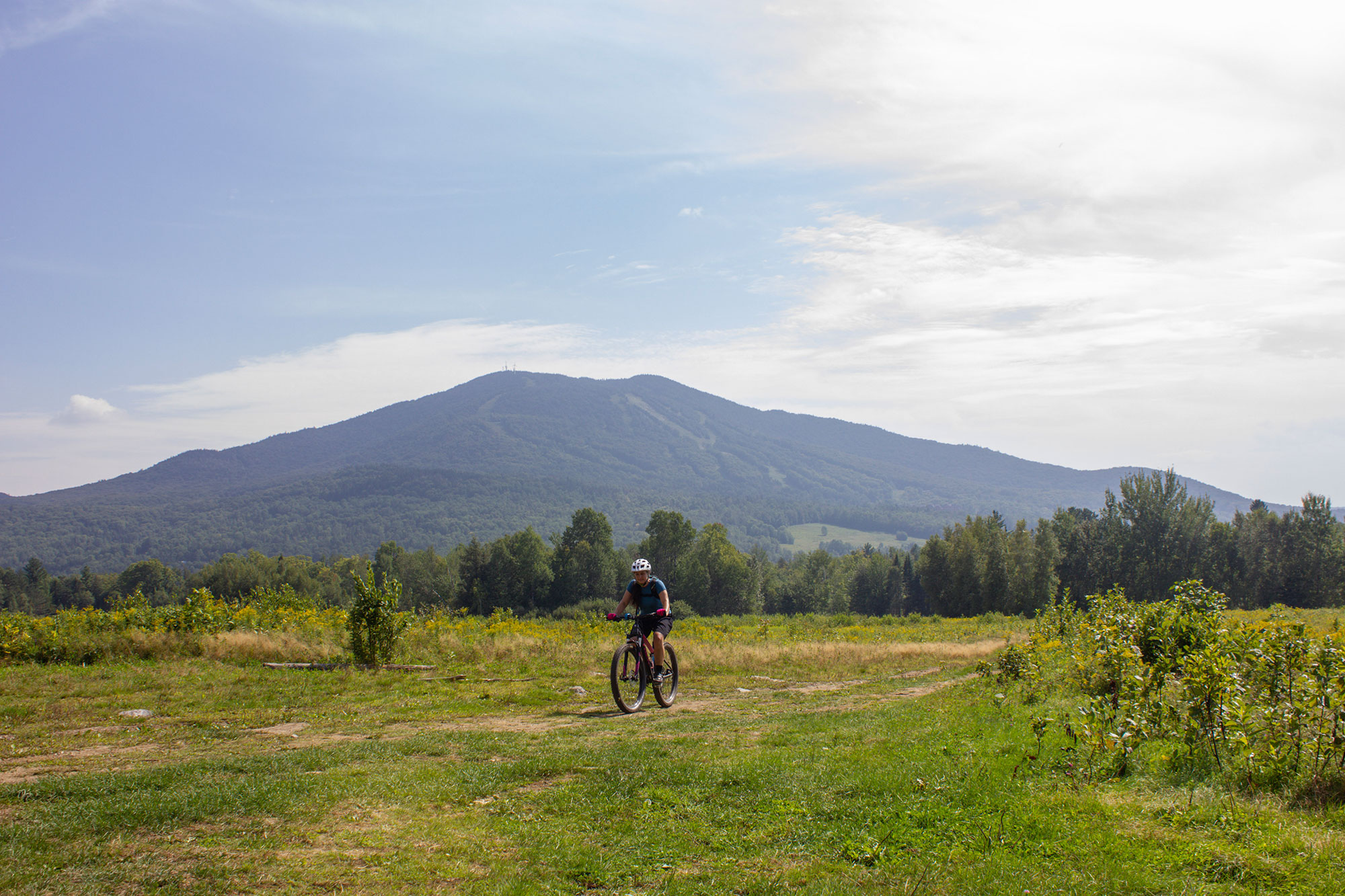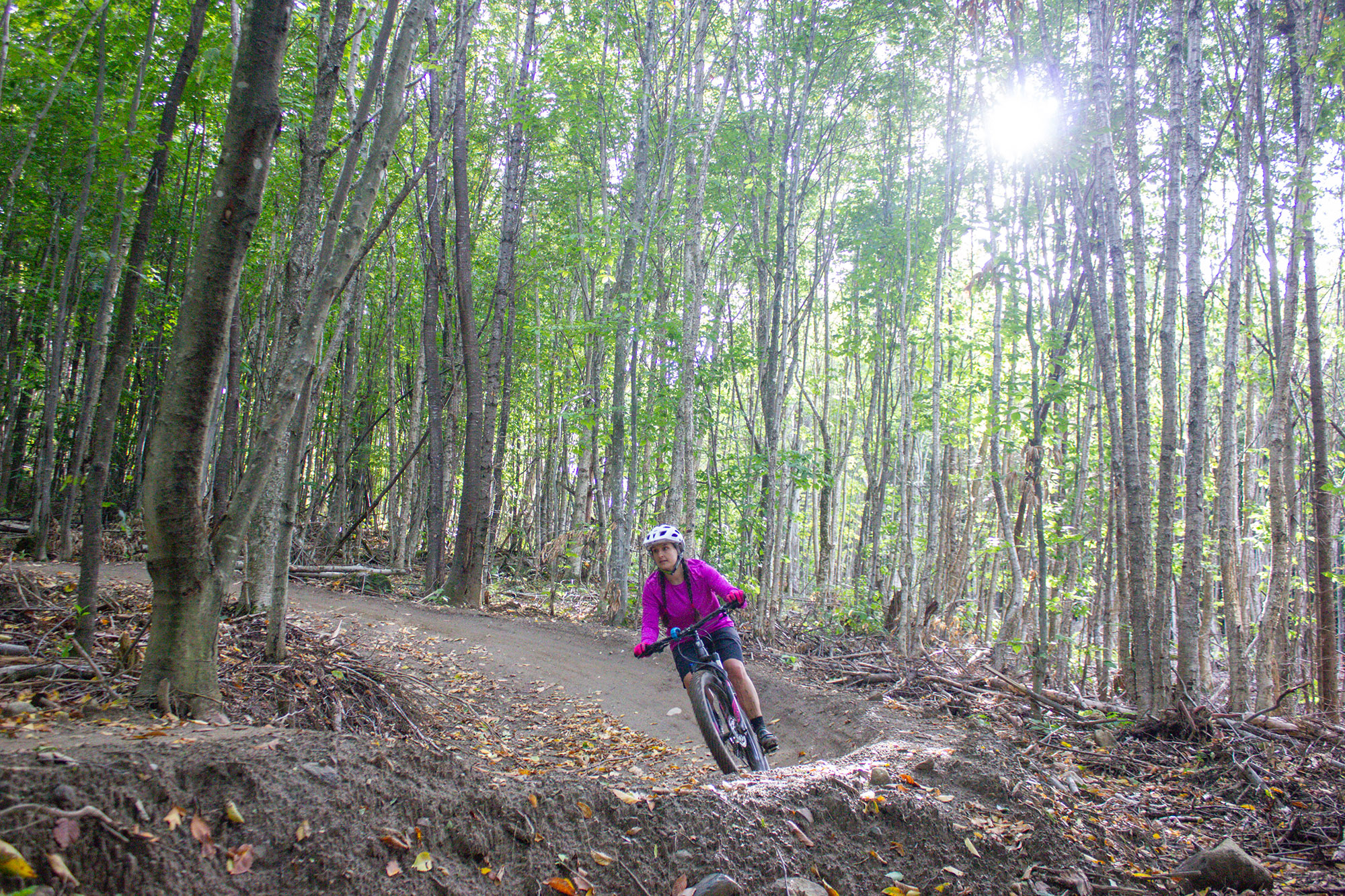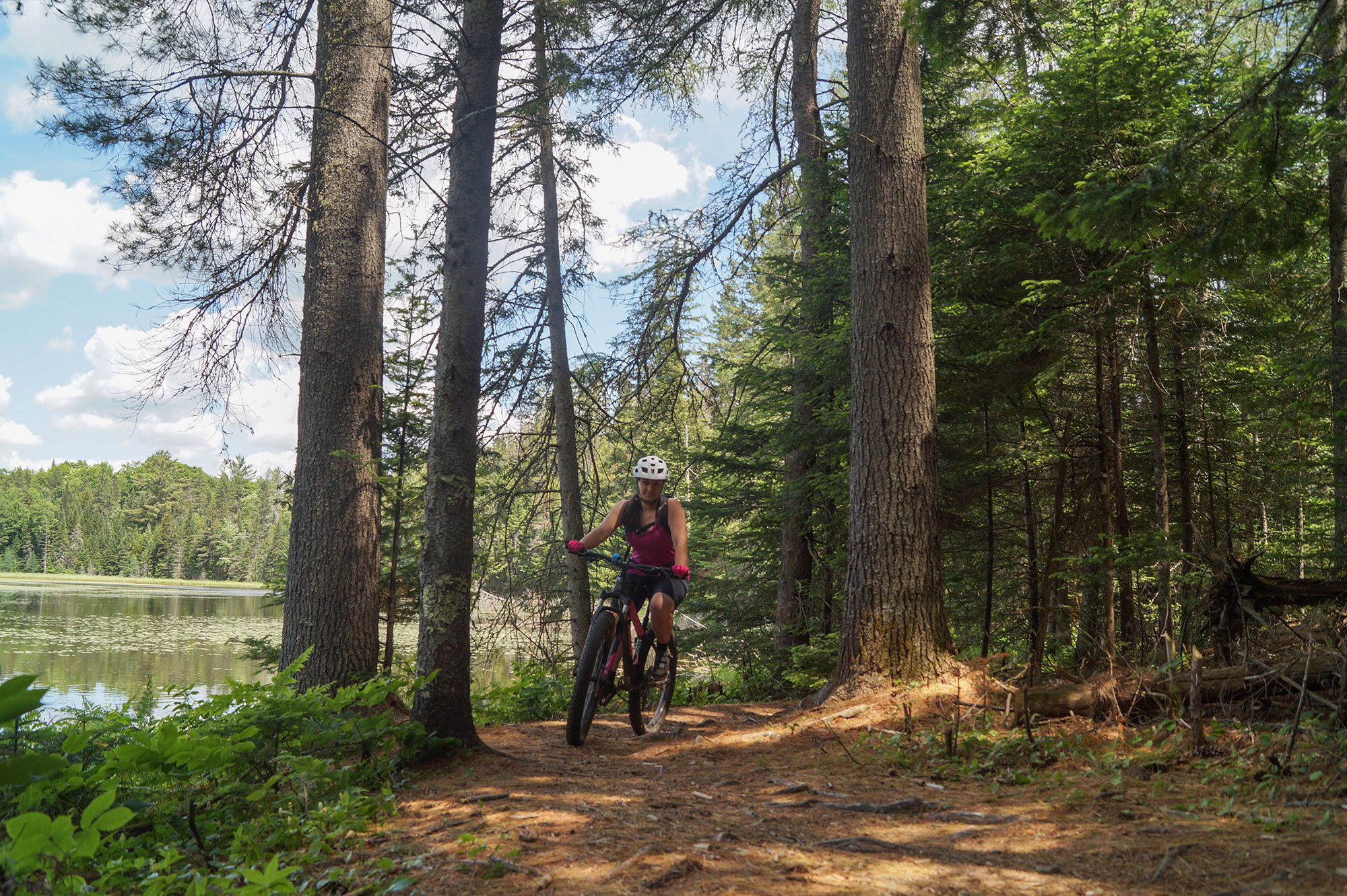Spring is the season of rebirth and renewal, when everything from the natural world to mountain biking shakes off the dormancy of winter. While many trails in New England aren’t quite yet ready to ride, spring is the perfect time to breathe new life into your mountain bike, gear, and stoke—ensuring you’re ready to roll when conditions allow.
If you’ve got the mountain bike bug but it’s still a little too muddy to ride, here are a few tasks to tick off your to-do list before putting tires on the trail.

Get a Tune-Up
The earlier in spring (or later in winter) you get your bike into the shop for a tune, the better. Simply, the longer and sunnier the days get, the busier the bike shop will be. Getting your bike in early for a tune also likely means a quick turnaround time and a more attentive tech—after all, they’re not staring down a shop filled with seemingly every other rider’s bike. An added bonus to bringing your mountain bike in early is that many shops offer pre-season specials on maintenance.
If you prefer to work on your bike yourself, it’s much better to burn a day on maintenance when you can’t ride, than one during the height of the season. Some jobs to handle before the riding season begins include:
- Giving your bike a deep clean and making sure to degrease and lube the drivetrain
- Scanning your bike’s frame for any signs of damage and reapplying any peeling frame protectors
- Inspecting the suspension to make sure it’s running smoothly and adjusting the air pressure
- Checking the brake pads and replacing them if necessary
- If you’re running tubeless tires, replenishing the sealant (if you’re feeling particularly ambitious, take the tire totally off, scrape away the old sealant, and start fresh)
One last thing: invest in a torque wrench, consult your owner’s manual, and tighten all the bolts on your mountain bike—especially those on the stem and handlebar. A rattling water bottle cage bolt is annoying, but a loose handlebar bolt can end a season.

Get an Upgrade
Spring is an excellent time to secure that must-have part—or even mountain bike. With new stock flowing into shops, inventory levels are generally high this time in the season, assuring you find the color/size you need, and good deals are available as stores look to move last year’s remaining merchandise. Tried-and-true upgrades include:
- Grips are a small investment that can make a huge difference in the comfort and performance of your bike. If the pattern on your grips is worn away, it’s time to start anew.
- Tires are how your bike connects with the trail and new tread makes a huge difference when navigating the slippery rocks and slick roots that define spring riding. Make sure to match the tread pattern to the type of riding you do—deep, widely spaced knobbies excel in muddy conditions while closely spaced, shallow lugs roll best on firm, well-packed trails.
- Saddles are subjective and the odds your mountain bike manufacturer picked just the right one for you are slim. If you don’t love how your bike treats your backside, do some research, visit your local bike shop, and sample some new seats to find one that works for you.

Repair Kit Refresher
If you’re not riding with a repair kit, now is the time to build one. In general, you’ll want to include:
- Tire repair tool and plugs (if riding tubeless)
- Spare tube and tire levers (if not riding tubeless)
- CO2 Inflator and two CO2 cartridges
- Multitool
- Chain tool and master link
- Derailleur hanger
- Zip ties
If you’ve been riding with a repair kit all along, make sure to replace any items you used last season.

Dial In Your Pack
Give your hydration or hip pack a once over and toss out any old energy bar wrappers, used CO2 cartridges, and punctured tubes. With the pack empty, give it a quick clean to remove grime and sticky spots left behind by old energy gels. A light wash in the sink with non-detergent soap like Nikwax Tech Wash should suffice for all but the filthiest bags. Now is the time to replace any broken buckles. If you ride with a hydration bladder, you’ll also want to give it a scrub. (If there’s something growing inside your hydration bladder, take it as a sign that it’s time for an upgrade.)
If you’re not riding with a first-aid kit, now is also the time to pull one together. Build it with the goal of being able to treat common bike-related injuries like stings, bleeds, and pain. Useful items include:
- Ibuprofen
- Benadryl
- Antibiotic ointment
- Dressings and/or gauze
- Tourniquet
- Bandages
- Duct tape
If you have been carrying a first-aid kit, make sure to replenish any items you used last season.

Go Through Your Gear
It’s also a good idea to check your gear before getting out on the trail. Inspect your helmet for any dents or cracks—any signs of visible damage is a good indicator that it’s time for a new one. If you’ve had your helmet for a while or ride a lot, it also might be time for a new lid. The Snell Foundation—a non-profit dedicated to helmet safety—recommends replacing helmets every five years, while the helmet manufacturer Bell suggests a new helmet every three years.
If you’re riding clipless pedals, you’ll also want to make sure the bolts holding the cleats in place on the bottom of your shoes are tight. If they look worn, now is a great time to replace them.
Finally, check out your bike gloves. If they are worn out, replace them to avoid some early season discomfort.
Benjamin Franklin famously said, “an ounce of prevention is worth a pound of cure.” This is certainly true for mountain bikes—the more effort you put into getting your bike and gear trail ready, the less likely you are to have issues while riding.
Tim Peck and Doug Martland
Tim and Doug met long ago at the Eastern Mountain Sports in Canton, Massachusetts. Bonding over a love of slick Quincy Quarry granite, White Mountain sufferfests, and scheming up adventures while folding tee-shirts, today Tim and Doug collaborate to write about their favorite outdoor activities and occasionally get nostalgic about tee-shirt tables.




